

Peter Weibel
Born: March 5, 1945
Died: March 1, 2023
in Odesa, Ukraine
Died: March 1, 2023
in Odesa, Ukraine
Peter Weibel was an Austrian post-conceptual artist, curator, and new media theoretician. He started out in 1964 as a visual poet, then later moved from the page to the screen within the sense of post-structuralist methodology. His work includes virtual reality and other digital art forms. (Wikipedia)
Movies for Peter Weibel...
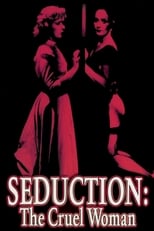
Title: Seduction: The Cruel Woman
Character: Mr. Maehrsch
Released: April 4, 2024
Type: Movie
Wanda is a dominatrix who runs a gallery in a building on the Hamburg waterfront, where audiences pay for the privilege of watching her humiliate her slaves. She is a business woman who smashes sexual stereotypes and social taboos with icy self-possession and an enigmatic smile. As artist she specializes in the staging of elaborate BDSM fantasies and her affairs transgress the usual boundaries of personal and professional life. Along the way she leaves her German lesbian lover, a shoe fetishist, for an American "trainee," and does more than step on the toes of the male performer who has broken the rules of the master-slave relationship by falling in love with her.


Title: Anyone who dares will take the cold off their horse
Character: Self
Released: October 18, 2010
Type: Movie


Title: Stille Weiher
Released: January 1, 1998
Type: Movie
Gustav Klimt in search of the artwork of the present. Using Klimt's paintings, "Quiet Pond" presents reasons why kitsch is art, art is kitsch, and art is art or possibly not. Who can know and who can judge?


Title: Post-Socialism+Retro Avantgarde+Irwin
Character: Himself
Released: September 3, 1997
Type: Movie
After the fall of the Berlin wall, much changed in Yugoslavia, that is now ex-Yugoslavia; a post industrial, post modern, post national, post colonial, post structural society, that can be perhaps summarized in the concept of post socialism? The disintegration of the concept of ideology means that notions are no longer clear. Because we think that we are outside an ideological context, but perhaps we ourselves are the centre of the ideology. It is this idea that corresponds with the thoughts about post socialism in the nineties, and probably the post ideological society of late capitalism as well. The end of the ideological period then perhaps seems imminent. These thoughts are considered in this philosophical media reflection, based on documentary fragments, statements by Peter Weibel and Slavoj Zizek and the works of three artists: Mladen Stilinovic (Zagreb), "Kasimir Malevich" (pseudonym, Belgrade) and IRWIN (Ljubljana).

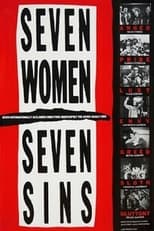
Title: Seven Women, Seven Sins
Character: (segment "Lust")
Released: April 19, 1986
Type: Movie
Seven Women, Seven Sins (1986) represents a quintessential moment in film history. The women filmmakers invited to direct for the seven sins were amongst the world's most renown: Helke Sander (Gluttony), Bette Gordon (Greed), Maxi Cohen (Anger), Chantal Akerman (Sloth), Valie Export (Lust), Laurence Gavron (Envy), and Ulrike Ottinger (Pride). Each filmmaker had the liberty of choosing a sin to interpret as they wished. The final film reflected this diversity, including traditional narrative fiction, experimental video, a musical, a radical documentary, and was delivered in multiple formats from 16, super 16, video and 35mm.

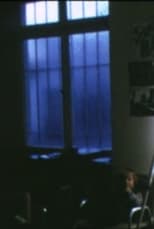
Title: Home Movies 1971-81
Released: January 1, 1985
Type: Movie
Home movies shot on Super 8mm by W+B Hein over 10 years.

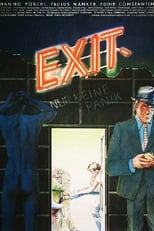
Title: Exit... But No Panic
Released: January 1, 1980
Type: Movie
A guy having sex with a woman on a rooftop – just to get her coffee-machine.


Title: Invisible Adversaries
Character: Peter
Released: February 4, 1977
Type: Movie
Anna, an artist, is obsessed with the invasion of alien doubles bent on total destruction. Her schizophrenia is reflected in the juxtapositions of long movie camera takes with violently edited montages: private with public spaces; black & white with colour, still photographs with video, earsplitting sounds with disruptive camera angles. Anna uses her body like a map; after a devastating quarrel with her lover, she paints red stitches on herself. Watching their scenes together, we realize how seldom, if ever before, the details of sexual intimacy have been shown in film from the point of view from a woman. Export privileges rupture over unity and never settles for one-dimensional solutions

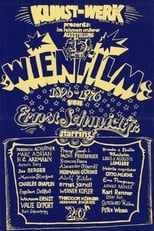
Title: ViennaFilm 1896-1976
Character: Self
Released: January 1, 1977
Type: Movie
This film is a kind of anthology about Vienna, from the invention of film to the present day. The aim is to break down the usual clichéd "image of Vienna" such as that found in the traditional "Vienna Film" by juxtaposing documentary footage, newly shot material and subjective sequences created by various artists. Individual, self-contained sections of the film gain new meaning within the context of historical material. Familiar sites appear estranged when edited together with historical scenes. Other scenes appear like a persiflage or satirical. The film does not incorporate any commentary whatsoever. It is a collage of diverse materials aimed at conveying a distanced image of Vienna to the viewer


Title: Kunst & Revolution
Released: January 1, 1968
Type: Movie
‘Kunst & Revolution is a documentation on the famous action known as the “filthy uni mess”, which led to a jury court trial. I only had a few metres of film with me and they were quickly spent, but still the film gives one a rough impression of the events. As a whole mythology quickly arose around the event, I altered the material to counteract this effect (through repetition, and adding other material, for instance from a film about keeping dogs, and my own leftover footage from the Muehl action number 54 ‘Im Freudenauer Wasser’).’ In film 16 of his anthology Ernst Schmidt Jr. documented the actions of Günter Brus, Otto Muehl, Peter Weibel and Oswald Wiener.

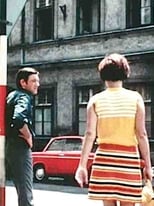
Title: Hernals
Released: December 31, 1967
Type: Movie
In Hernals documentary and pseudo-documentary procedures were filmed simultaneously by two cameras from different viewpoints. The material was then divided into phases of movement. In the montage each phase was doubled. The techniques used in this process vary. Also the sound was doubled, again using different techniques. Two realities, differently perceived according to the conditions of this film, were edited into one synthetic reality, where everything is repeated. This doubling up destroys the postulate: identity of copy and image.
